Crossing Canada by Train – with Brian
Reluctantly, Julianne agrees to cross Canada by train with her husband and discovers a landscape far more beautiful than she expected, on a mode of transport far more beguiling than she thought possible.
In the beginning, it was me who had trouble convincing Brian to visit Canada.
“But Europe's on our doorstep,” he said, “why go to the other side of the world?”
He was exaggerating of course, but he wasn't keen. That was, until he hit on the idea of crossing Canada by train.
I didn't even know it was possible, but Brian informed me that there was a very famous service departing from Toronto, taking four days to reach Vancouver, on the western seaboard.
I'm not the biggest fan of trains – they seem so old-fashioned – but it seemed to be the only way I would get to see Niagara Falls!
And after flying into Toronto, my dream came true: we visited the world famous waterfall, gazing into the vast spray which lifted up from the roaring water.
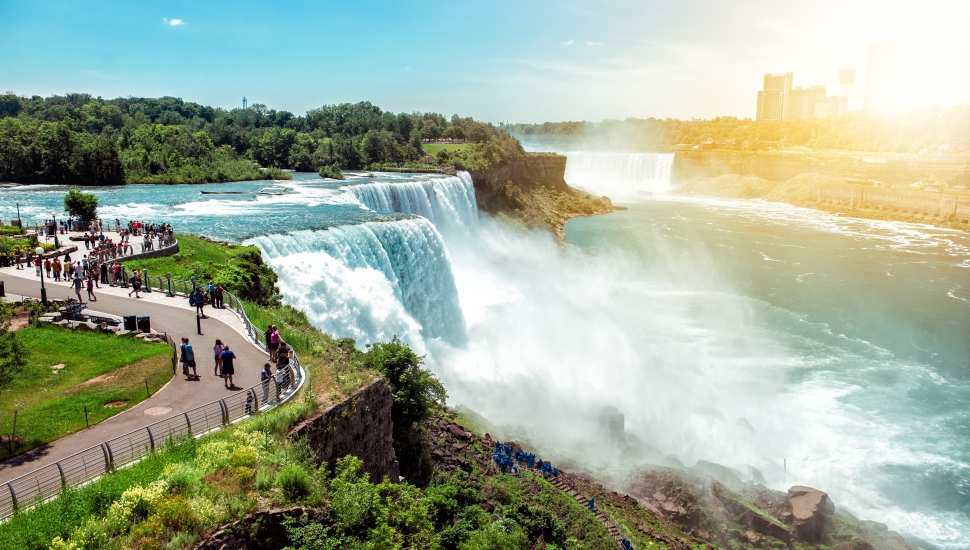
An incredible experience of sight and sound – but somewhat blunted, I have to say, by the idea of spending four days on a train. But I had promised. Besides, we had already bought our tickets – and they weren't cheap.
At Toronto's grand old Union Station with its fantastically imposing entrance, we were taken to our “Prestige” cabins on something like a golf cart. Friendly staff were at the ready to take our luggage and show us to our cabins. Straight away I realised: this was no ordinary train trip.
"Not exactly London to Exeter, is it dear?" said Brian with an uncharacteristic grin.
Later, as the train pulled out into the night, I gazed around the plush interior of our cabin, which had been renovated, Brian explained, several times since the train came into service in the 1950s.
And so we began our 2,792-mile journey through the heart of Canada.
That night we enjoyed our first meal in the dining car as we barrelled through the dark night.
I almost nodded off over a glass of red as Brian began telling me the history of the railway (it had been a long day).
I've never been too good at sleeping on trains, but the Canadian was a far cry from the London to Edinburgh sleeper. Our Prestige room was just as comfortable – if not luxurious – as the website suggested. Before bedtime, the comfy 'modular' sofa was transformed into a decent-sized double bed by the concierge – who was on-hand to make sure our stay was as comfortable as possible.
In the morning, as I gazed out over prairies and boreal forests, Brian explained that the transcontinental railway had been promised to British Columbia, in exchange for the state joining the Canadian Confederation.
“Many Chinese labourers died building it,” he went on, reading from his guide book, “They earned between $1 and $2.50 per day. But they had to pay for their own food, clothing and transport to the job site, giving them little to send home to their families."
“Oh isn't that terrible, Brian.”
It was hard to imagine so much misery lay behind the majestic scenes in front of me.
The map in Via Rail gives the impression of a fairly direct route, but the train actually snakes around a lot. Building this line was not easy and they had to weave around obstacles whenever they could.
“They even built parts of it over swamp land,” Brian explained to a French tourist at the next table, who tried to ignore him.
After two days we reached the Canadian Shield, an area covering half of the country. Its thin soils support a vast boreal forest, punctuated with tracts of rock and mighty rushing rivers. We passed an immense game reserve, spying deer, moose, mountain goats and even bears as we hurtled across the continent.
Aside from the occasional smelting works – a reminder of the mineral riches of these lands – nature is king in this endlessly fascinating landscape.
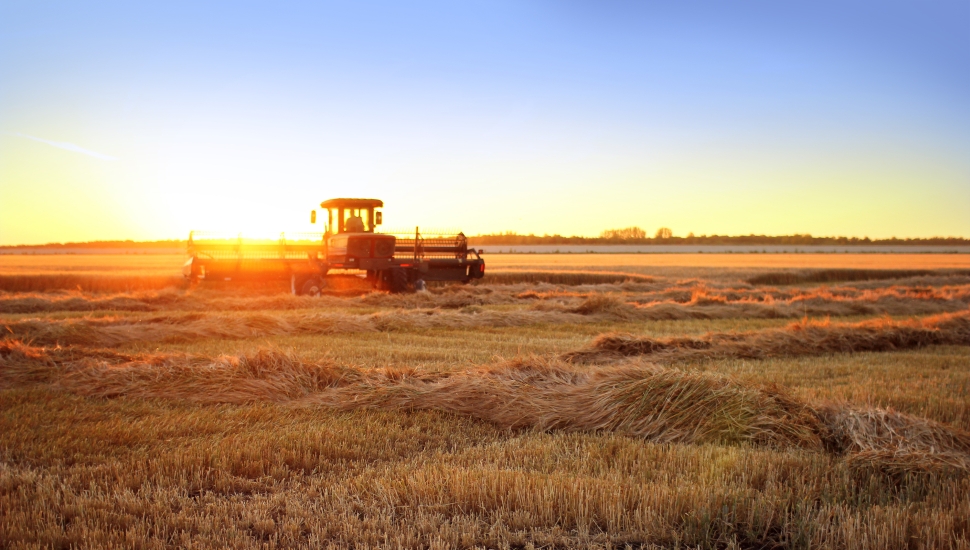
As we headed west, the farmlands of Manitoba took over. These immense open tracts seemed to merge with the hazy sky. And then Winnipeg appeared on the horizon – suddenly and without warning. The station – designed by the architects behind New York's Grand Central – was just as magnificent as the Big Apple's.
Brian's historical recountings and statistics faded into the background as we continued our journey. Hills rose up as we moved beyond Saskatoon, with Brian pointing out the odd oil refinery before we arrived in Edmonton, the Albertan capital.
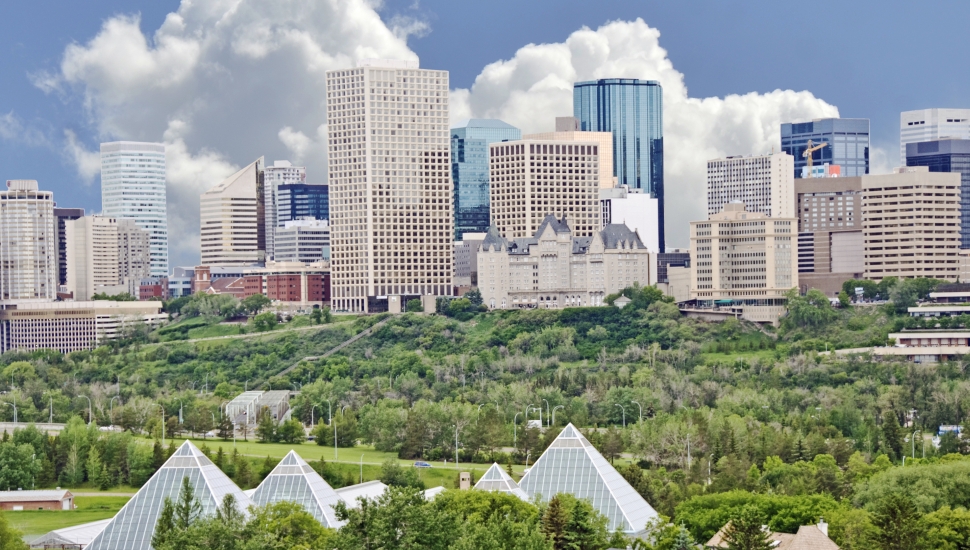 Edmonton, Canada
Edmonton, Canada
After Hinton, the mighty Miette Range rose up over the dark forests, covered in a year-round layer of snow.
As we sat in the domed observation car, many of the travellers around us began taking photos with more gusto than before. I found myself doing the same. It was an amazing sight: rising up into the mountains, pursuing a route that seemed almost impossible to complete.
The train's key purpose – servicing tourists – was made continually apparent by the way we would slow down at waterfalls and bridges and get our holiday snaps. How thoughtful!
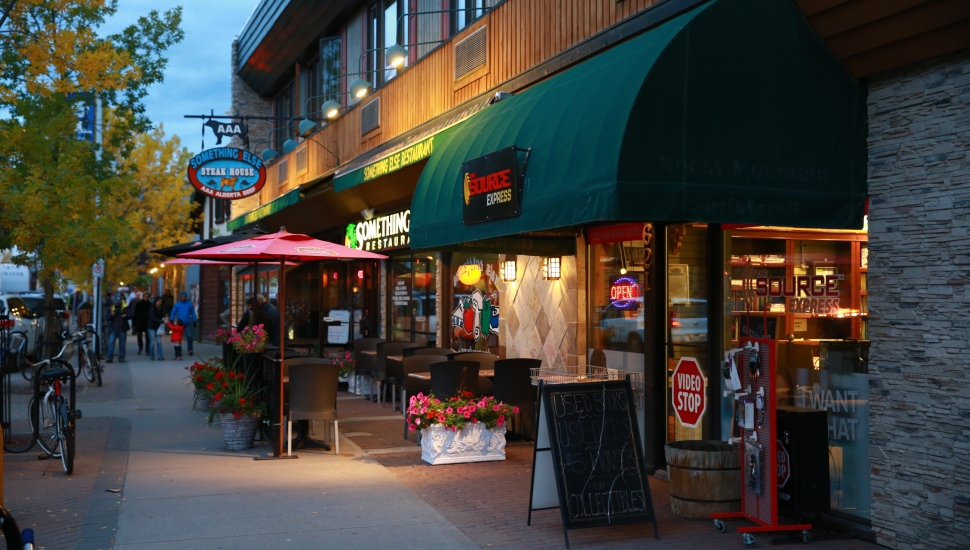 Jasper, Canada
Jasper, Canada
We stopped for a while at Jasper, where we had time to enjoy the town's pretty high street before heading further west. In the minutes before we pulled out we saw a number of window cleaning staff using rollerblades to move up and down the platform. Our concierge explained that the train got longer and longer as high season approached and rollerblades were necessary to clean the windows on time.
On the fourth day we reached the Rocky Mountains – one of the highlights of the trip. Our ever-helpful concierge urged us to grab a seat in the observation car soon after breakfast, which we did.
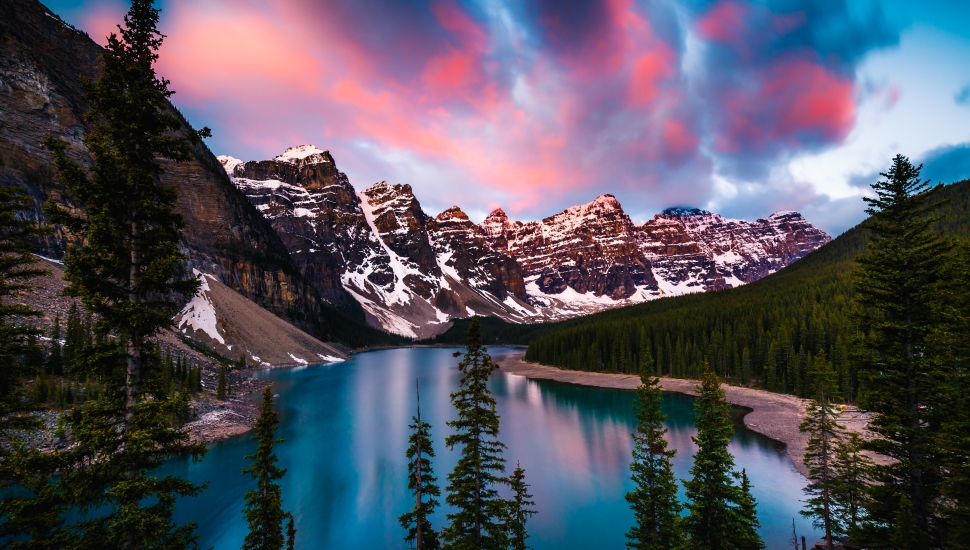
Brian got into a minor disagreement with a Frenchman over which peak was Mount Dobson (12,972ft). With so many peaks it was hard for them to even understand which peak they were pointing at. It was a spectacular sight and I regretted being so unenthusiastic about the trip.
Another highlight was the Fraser River canyon, on each side of which was a rail. The first rail to be built was considered the "easiest" – for the CPR – while the rail on the other side – for the CNR – was far trickier to construct. But while the engineers had a tough time, it certainly made for some amazing engineering – with regular avalanche shelters and tunnels built in.
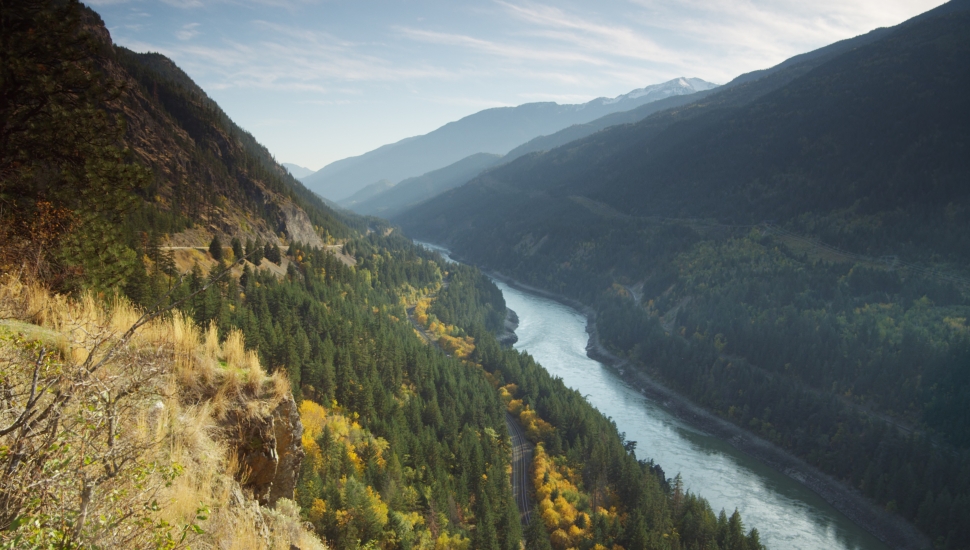
We manoeuvred ourselves through Hell's Gate and espied white water rafters engaging with the boiling froth of canyon waters. Then suddenly a vast black rock loomed ahead. Brian explained it was named after Lady Franklin, the widow of the famed explorer who vanished in the Arctic in 1847.
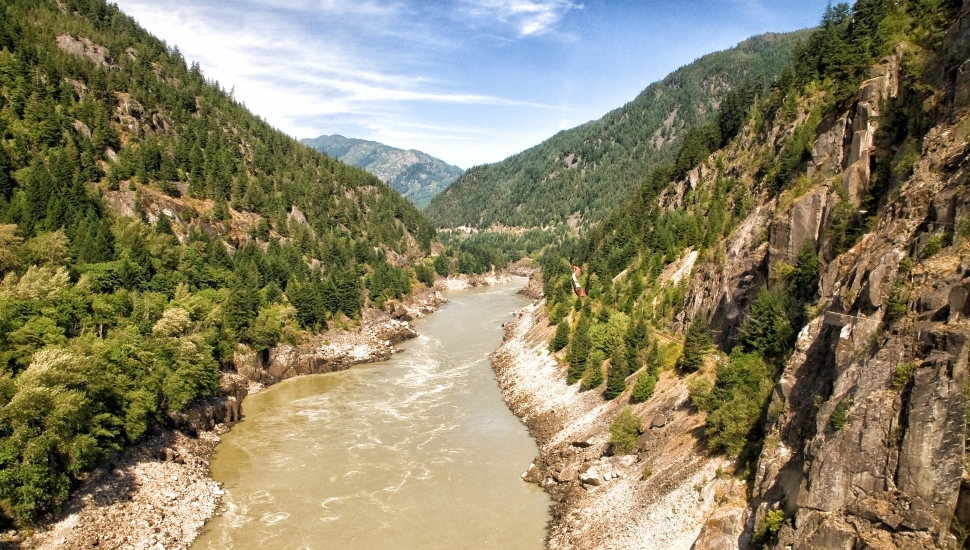
And then the wild landscape gave way to more gentle scenery as we emerged from the defile. It was a pretty setting in which to wind down from the glories of the Rocky Mountains.
As we rolled into the old CNR terminus in Vancouver, I smiled over at Brian, who, even given his initial enthusiasm for the trip, appeared to have been even more impressed than he'd expected.
We alighted, tired but happy, and glanced up at the big neon sign that read "Pacific Central" – it dated back to the 1930s and it still worked.
Some things really are better done the old fashioned way, I thought.